This article was written by Luna Rose. Luna Rose is an autistic community member who specializes in writing and autism. She holds a degree in Informatics and has spoken at college events to improve understanding about disabilities. Luna Rose leads wikiHow's Autism Project.
There are 91 references cited in this article, which can be found at the bottom of the page.
This article has been viewed 36,418 times.
Autism spectrum disorder (ASD) includes a range of symptoms, skills, and levels of ability. Plenty of conditions, like ADHD, can be mistaken for autism, and autism can be mistaken for other neurodevelopmental disorders. It can be challenging to get an accurate diagnosis for either yourself or a loved one. This article can help you narrow down and map out the possibilities of autism, something else, or multiple conditions. Please note that this article is just here to guide you; only a trained medical professional can diagnose you.
Steps
Understanding Autism
-
1Know the signs of autism. Autism is a complex developmental disability that impacts many areas of life. Sometimes it is identified as early as in infancy, whereas other people are not accurately diagnosed until their teen or adult years. Autism is associated with both needs and strengths, and every autistic person will have a different mix of traits. An autistic person will experience most or all of the following:
- Social confusion
- Difficulty figuring out what others are thinking
- Idiosyncratic speech
- Discomfort with eye contact (or unusual eye contact)
- Meeting developmental milestones late, early, or out of order
- Preference for routine and familiarity
- Disorganization
- Under- and/or over-sensitive senses
- Auditory processing difficulties
- Repetitive movements (stimming)
- Narrow, passionate "special interests"
- Literal thinking
- Thinking outside the box (or, rather, not knowing where the box is at all)
- Strong systemizing skills
- Sincerity
-
2Recognize that autism is an inborn and lifelong condition.[1] It's predominantly genetic, meaning that people cannot control whether they or their children are autistic. Signs of autism have been identified as early as the 2nd trimester of pregnancy.[2] Autistic children will grow into autistic adults.Advertisement
-
3Understand the diversity of autistic experiences. Autism is traditionally thought of as a linear spectrum that ranges from "mild" to "severe." However, because autism impacts so many dimensions of life, it's far more complex than that. Every autistic person will have a different mix of traits. A common saying in the Autistic community is "If you've met one autistic person, you've met one autistic person."
- Instead of thinking of autism as linear, try thinking of it like an ice cream sundae bar.[9] Each person gets slightly different ingredients in different amounts. There is an incredible amount of variation, and no one combination is objectively "better" or "worse" than the others.
-
4Avoid believing the myths about autism. Autism is a seriously misunderstood disability, and many people think it is simpler or worse than it really is. Autistic people are often unfairly stereotyped.
- Bad parenting doesn't cause autism. Parents of autistic children have been unfairly criticized for different things over the years: being too unloving,[10] not spanking,[11] [12] vaccinating their kids, or not trying hard enough to "detox" and "defeat" the autism.[13] [14] [15] But it's impossible to turn a child non-autistic. Parents can help autistic kids become more well-adjusted, but they can't change whether the child is autistic.
- Vaccines don't play a role. The only researcher who suggested this was intentionally faking his data for financial gain (around half a million US dollars).[16] [17] Every independent researcher since has found no correlation.[18] [19] [20] Some people believe this myth because signs of autism may start becoming apparent at 18 months, around the same time as the MMR vaccine.
- Autism isn't just for little white boys. Autistic people can be of any age, race, and gender. Symptoms can often show differently in males and females, and be regarded differently based on culture.
- Autistic people can be loving and caring. The claim that autistic people "lack empathy" is misleading. While autistics may struggle to understand others, they often care deeply. Autistic people can be incredibly kind and loving towards others.[21] [22] [23]
- Autistics are mostly nonviolent. In fact, autistic people are less violent than non-autistics.[24] [25] [26] Violent behavior is rare and often due to extreme situations.
- Autism isn't an illness. "More autistic" doesn't mean "less happy" or "less successful." Autism is a condition, something that simply is rather than an affliction. In fact, autistic people feel happier when they learn to accept their autistic traits and adapt to the environment.[27] [28]
-
5Remember that autism isn't the end of the world. Autistic people can lead happy and healthy lives with the right support. A positive environment makes a big difference. Autistic people, including those who are seriously disabled, have written about enjoying their lives.[29] [30] [31]
- The right therapist can help teach skills and work on adaptations to make life easier for the autistic person.
- Autistic people in an accepting environment have lower stress.[32]
- Doctors may say things like "your child will never have a job" or "they will be unable to know love" to parents of young children. This ignores the fact that many autistic kids are late bloomers and lifelong learners. There's no way to tell what the future will be. Avoid the prophets of doom.[33] [34]
Distinguishing Autism From Mental Illnesses
-
1Distinguish between autism and social anxiety. Both autistics and people with social anxiety may enjoy their alone time, and possibly self-isolate. They may also be a bit quiet and awkward. However, unlike a mentally healthy autistic person, a non-autistic person with social anxiety will likely:[35]
- Have excessive, unrealistic fears about socializing with others
- Experience less social confusion (but exaggerate the negatives)
- Show signs of nervousness in social settings: rapid heartbeat, sweating, shaking, blushing, breathing difficulties, dizziness, stomachache, etc.
- Avoid crowds and public places for social reasons, not sensory reasons
- Develop anxiety problems at any age
- Not experience autistic traits like developmental delays, special interests, disorganization, stimming, and more
-
2Distinguish between autism and selective mutism. Selective mutism is an anxiety disorder related to social anxiety in which people find it impossible to speak when they are nervous. Both selective mutism and autism often involve limited speech, avoidance of eye contact, introversion, difficulty making friends, and nervousness. Unlike mentally healthy autistic people, people with selective mutism will often:[36]
- Be unable to speak when around unfamiliar people or settings (as opposed to when overwhelmed by sensory input)
- Experience no communication problems at home around familiar people
- Show signs of social anxiety
- Lack autistic traits like developmental delays, stimming, passionate interests, sensory differences, need for routine, and social confusion
-
3Distinguish between autism and complex PTSD (CPTSD). Autism is inborn, while complex PTSD is caused by repeated trauma or exposure to a stressful environment. Both conditions can involve difficulty with relationships, hyperactivity or passivity, unusually strong or inhibited emotions, repetitive motions, and more. Unlike a mentally healthy autistic person, non-autistics with CPTSD will most likely:
- Only move repetitively under stress (never for fun, or as a focusing aid)
- Not feel safe around other people, and avoid making friends or dating
- Experience flashbacks, dissociation, and/or panic attacks related to trauma
- Not necessarily need routines, or use them to avoid triggers
- Have frequent or dramatic nightmares
- Lack signs of autism like developmental delays, special interests, and communication difficulties
-
4Distinguish between autism and Obsessive-Compulsive Disorder (OCD). While OCD behavior can sometimes resemble autistic stimming, people with OCD act this way to stave off a sense of impending danger. People with OCD obsessively worry about safety, and act on their compulsions as an attempt to cope. Unlike a mentally healthy autistic person, someone with OCD will probably:[37] [38]
- Worry uncontrollably
- Feel the need to check or fix things in order to protect themselves, other people, or property (e.g. their house)
- Take longer to complete tasks due to perfectionism, not motor skill issues or sensory distractions
- Make repetitive movements to stave off distress (never for focusing or expressing feelings)
- Always be able to explain why they make repetitive movements (e.g., "To make sure the house won't be on fire" as opposed to "I don't know" or "It's just fun")
- Not enjoy their obsessive thoughts (unlike autistic special interests), and tend not to collect information about them
- Lack signs of autism like developmental delays, special interests, and communication difficulties
-
5Distinguish between autism and bipolar disorder. Autistic people may be misdiagnosed with bipolar disorder when doctors do not understand the reasoning behind mood swings.[39] People with bipolar disorder experience manic episodes (involving high energy, sleeplessness, and impulsivity), depressive episodes (involving lethargy and extreme sadness), and periods with no symptoms. Unlike mentally healthy autistic people, people with bipolar disorder:
- Experience mood swings that last for days, weeks, or months (not minutes or hours)
- Tend not to have clear causes for their mood swings
- Lack signs of autism, like developmental delays, special interests, stimming, and communication difficulties
-
6Distinguish between autism and schizophrenia. Autistic people may be misdiagnosed with schizophrenia when doctors do not understand the reasoning behind social difficulties. People with schizophrenia experience positive symptoms (involving hallucinations, delusions, and disorganized thinking), negative symptoms (involving social withdrawal, decreased emotional expression, and apathy), and cognitive symptoms. Unlike mentally healthy autistic people, people with schizophrenia:
- Experience psychotic symptoms (such as hallucinations and delusions)
- Lack some signs of autism, like developmental delays, special interests or stimming
Distingiushing Autism from Personality Disorders
-
1Distinguish between autism and schizoid personality disorder (SzPD). People with SzPD are typically quiet loners. Both SzPD and autism involve difficulty with social skills, deep inner worlds, potential flat affect, usually few or no friends, and enjoyment of alone time. Unlike autistic people, non-autistics with schizoid PD will most likely:[40] [41]
- Have little interest in making friends or finding a romantic partner
- Be indifferent to praise and criticism
- Not gain new social skills, or want to gain them
- Experience little pleasure
- Show little motivation or interest in achieving goals
- Be less likely to enjoy close relationships, especially with people who aren't family members
- Lack passionate interests, developmental delays, sensory issues, stimming, and other signs of autism
-
2Distinguish between autism and Schizotypal Personality Disorder (StPD). People with StPD are often eccentric. Traits of StPD include unusual behavior and dress, difficulty making and keeping friends, feeling different from others, odd speech, unusual thinking, and exaggerated or flattened facial expressions.[42] This can make it hard to differentiate from autism.[43] [44] Unlike most autistic people, non-autistics with StPD will likely experience:
- Magical thinking: the belief that two events are linked without any plausible reason (e.g. believing that it will rain because they woke up on the left side of the bed)
- Difficulty distinguishing between fantasy and reality
- Social anxiety or discomfort
- Paranoia and difficulty with trust
- Lack passionate interests, developmental delays, sensory issues, stimming, and other signs of autism
-
3Distinguish between autism and avoidant personality disorder (AvPD). Avoidant personality disorder is like shyness taken to the extreme, and the person feels very stressed during social interactions. Autistic people with a history of bullying and ostracism can develop AvPD-like coping mechanisms, such as avoiding social risks and becoming hyper-aware of criticism, making it harder to tell the difference.[45] Unlike most mentally healthy autistic people, non-autistics with AvPD will:[46] [47]
- Avoid interacting with other people to a large degree
- Lack close relationships due to fear, but wish they could have them
- Experience intense sensitivity to any perceived criticism
- Exaggerate the negatives
- Lack developmental delays, passionate interests, sensory issues, and other signs of autism
-
4Distinguish between autism and Borderline Personality Disorder (BPD). People with BPD experience extreme emotional sensitivity. When autistic people (especially women) are written off as "too sensitive" or "overly emotional," they may be misdiagnosed with BPD. While the two conditions share some traits like sensitivity and high systemizing skills,[48] the underlying reasons for their behavior are very different. Unlike a mentally healthy autistic person, a non-autistic person with BPD will:[49]
- Fear and react strongly to real or perceived abandonment
- Experience tumultuous personal relationships
- Act manipulatively due to panic (without realizing they're out of line)
- Lack trust
- Engage in self-destructive behavior
- Experience explosive anger and drastic mood swings
- Feel empty inside
- Struggle with self-reflection
- Lack developmental delays, passionate interests, sensory issues, and other signs of autism
-
5Distinguish between autism and Obsessive Compulsive Personality Disorder (OCPD). People with OCPD are perfectionists who want to be in control. Traits associated with OCPD include detail orientation, practicality, aloofness, self-righteousness, hoarding, and stubbornness.[50] [51] Unlike most autistic people, non-autistics with OCPD are likely to:
- Struggle with delegating responsibility
- Be workaholics
- Hoard items with no sentimental value in case they are useful later
- Show little generosity
- Struggle with having fun
- Place little value in close relationships, even in immediate family
- Lack developmental delays, passionate interests, sensory issues, and other signs of autism
-
6Know the signs of other personality disorders that could be mistaken for autism. Personality disorders often arise from a combination of genetic predisposition and a reaction to a difficult childhood environment (e.g. an abusive caregiver).[52] [53] While autism is present from birth, personality disorders typically don't show up until late teen years or adulthood.
- Dependent Personality Disorder (DPD) involves deep-seated insecurity and need for reassurance. This can manifest as clingy, submissive behavior. People with DPD struggle with decision-making, assertiveness, voicing disagreement, and being alone. They feel safest when someone else is caring for them.[54] [55]
- Histrionic Personality Disorder (HPD) involves a deep need to be at the center of attention. People with HPD may dress and behave eccentrically, and can come across as self-centered. They seek attention and approval from others in order to feel secure, and cannot bear being ignored.[56] [57]
- Antisocial Personality Disorder (ASPD), Narcissistic Personality Disorder (NPD), and Paranoid Personality Disorder (PPD) have less in common with autism.[58] Both ASPD and NPD usually involve cruel and manipulative behavior, which is not characteristic of autistic people. (Autistic people usually lack the social skills necessary to successfully manipulate others, and any rude behavior is often unintentional.) People with PPD experience extreme paranoia, which does not noticeably overlap with autistic traits.
Distinguishing Autism From Other Conditions
-
1Distinguish between autism and Sensory Processing Disorder (SPD). Many autistic people have SPD, but not all people with SPD are autistic. Non-autistic people with SPD will have under- and/or over-sensitive senses, while lacking most or all the other signs of autism.
-
2Distinguish between autism and ADHD. Autism and ADHD share many core traits, such as stimming, executive dysfunction, hyperfocus, mood swings, avoidance of eye contact, social difficulties, original thinking, and sensory issues. This makes it difficult to tell the difference. Non-autistic people with ADHD are more likely to:
- Experience significant disorganization
- Struggle to focus, even in a sensory-friendly environment
- Struggle a lot with impulse control
- Start tasks without finishing them
- Lose and forget about things
- Move repetitively mainly when bored, energetic, or needing to focus (less for sensory or emotional reasons)
- Experience less social confusion, unusual tone/pitch of voice, nonspeaking episodes, and literal thinking
- Lack developmental delays
-
3Distinguish between autism and Nonverbal Learning Disability (NVLD). Contrary to what you might expect from the name, people with NVLD have above-average verbal skills and difficulty with nonverbal skills (like math). Autism and NVLD share many traits like attention to detail, literal thinking, social difficulties, disorganization, clumsiness, need for routine and familiarity, and potential hyperlexia. Unlike autistic people, people with NVLD are likely to experience:[59] [60] [61]
- Difficulty understanding visual information, like charts or graphs
- Strong rote memory, especially for auditory information
- Difficulty with abstract thinking
- Poor spatial awareness (getting lost, struggling with riding a bike or driving a car, bumping into things)
- Lack of stimming
-
4Distinguish between autism and Social Communication Disorder (SCD). Autism and SCD share many traits related to conversation skills, such as social cluelessness, literal thinking, difficulty noticing implications, difficulty making and maintaining friends, trouble with turn-taking in conversations, and difficulty understanding facial expressions and body language. While autism impacts many areas of life, SCD is more limited. Unlike most autistic people, people with SCD will experience:[62] [63]
- Trouble with reading comprehension
- Delays in reading and writing skills
- Lack of stimming and special interests
-
5Distinguish between autism and Reactive Attachment Disorder (RAD) in children. Whereas autism is inborn and lifelong, RAD is a childhood disorder caused by issues like neglect or changing caregivers. Both autistics and children with RAD may experience need for routine, difficulty regulating emotions, unusual eye contact, and an unusual "comfort zone" with regards to affection. Unlike mentally healthy autistic kids, non-autistic kids with RAD will usually:[64]
- Distrust their caregivers, and have a poor relationship with them
- Have the social skills necessary to manipulate others, sometimes very skillfully
- Hoard food, or only accept food from certain people
- Exaggerate a lot, and be strongly reactive
- Be good (or at least not terrible) at lying
- Only use echolalia for coping with stress (never for amusement or as a memory aid)
- Lose or break their favorite things
- Prefer to play only with other children, and repetitively play out certain stories or roles
- Lack a conscience
-
6Distinguish between autism and alexithymia. Alexithymia involves lack of emotional awareness. Around half of autistic people have alexithymia, but non-autistics can have alexithymia too. It can be inborn or acquired.[65] Alexithymia makes it hard to describe and understand one's own emotions, and can make it difficult to understand and empathize with other people. Unlike autistics without alexithymia, non-autistic people with alexithymia often may:[66] [67] [68]
- Experience "mystery illnesses" like stomachaches and headaches that are a result of stress
- Seem not to react to stressful circumstances
- Experience limited imagination, leading to limited fantasies and dreams
- Be unable to explain why they acted a certain way
- Seem to "forget their manners" or act rude
- Show little interest in affection or sexual activity (not explained by sensory issues or asexuality)
- Seem distant and aloof
- Lack developmental delays, repetitive behavior, passionate interests, need for routine, and other autistic traits
-
7Notice physical issues and differences that could cause autistic-like behavior. Children with physical difficulties and disabilities may be unable to express what is going on. A child who behaves unusually might be dealing with something else.
- Blind or visually impaired children may not make eye contact, and may struggle to interact with parents because they cannot see them.[69] They may also stim.
- Deaf or hard of hearing children may have language delays.[70] They may seem "unresponsive" when they actually just can't hear something.
- Apraxia and dyspraxia can make it harder to use motor skills, and can affect speech.[71]
- Physical pain can make children unhappy, and they may be irritable, disruptive, or withdrawn.[72]
-
8Distinguish between autism and tic disorders. Tic disorders can sometimes be mistaken for stimming in autism. Unlike autistic stimming, tics serve no real purpose. Tic disorders include:
- Tourette syndrome
- Tardive dyskinesia
-
9Distinguish between autism and rare conditions. Some rare conditions are misdiagnosed as autism. While it is very unlikely that you or your loved one has any of these conditions, it is good to be able to rule them out. Rare conditions that can be mistaken for autism include:
- 22q11.2 deletion involves developmental delays, cleft palate, heart problems, limited hearing, low muscle tone, breathing problems, learning disabilities, and scoliosis.[73] [74] [75]
- Angelman syndrome involves developmental delays, seizures, hand-flapping, cheerfulness, inability to speak, tongue thrusting, small head size, and difficulty balancing and walking.[76] [77] [78]
- Childhood Disintegrative Disorder involves typical development until usually around age 3 or 4, with the child losing all language ability and sometimes toileting skills. Seizures, sensory issues, and motor skill impairments may occur.[79]
- Cornelia De Lange syndrome involves autistic-like behavior, slow growth, developmental delay, limited hearing, seizures, and more. People with it usually have a short and small head, a unibrow, long eyelashes, and a small nose.[80] [81]
- Fragile X syndrome can involve signs of autism. Large ears and forehead, soft skin, and a long face are typical. Developmental delays, limited eye contact, anxiety, hand flapping, a helpful disposition, and impulsivity are common.[82] [83] It may include intellectual disability, ADHD, and seizures.[84]
- Landau-Kleffner syndrome involves seizures and aphasia (becoming unable to speak and understand speech).
- Lead poisoning can involve developmental delays, irritability, weight loss, fatigue, gastrointestinal problems, weakness, pallor, limited hearing, and seizures.[85] [86]
- Phenylketonuria (PKU) is a metabolic disorder involving developmental delays, seizures, intellectual disability, and hyperactivity. They tend to have pale skin and hair relative to their family, a small head, skin conditions like eczema, and an odd body odor.[87] [88]
- Rett syndrome involves regression during infant or toddler years, difficulties with motor skills (walking, breathing, use of hands), hand-wringing, and sleep issues.
- Smith-Magenis syndrome involves intellectual disability, delayed speech and motor skills, sleep problems, repetitive self-hugging, licking fingers before flipping pages, self-injury, a charming personality, impulsiveness, and anxiety. They tend to have a broad face with full cheeks, deep-set eyes, and a strong jaw.[89] [90] [91]
- Williams syndrome involves intellectual disability, an outgoing and friendly personality, strong auditory learning skills, and cardiovascular problems. They tend to have a large forehead, a small nose, full cheeks, and a wide mouth.[92] [93]
- Sanfilippo syndrome"(also called MPS III) is often misdiagnosed for autism because they both have sensory issues, developmental delays, and seizures are common. Sanfilippo is a terminal diagnosis, so this misdiagnosis is critical.[94]
-
10Distinguish between autism and personality traits. If a person lacks developmental delays and other more disabling aspects of autism, but still has some signs, it's possible that these are just quirks and not aspects of a disability. (Though keep in mind that autistic people also have personalities.) Here are some personality traits that can look a little bit like autism:
- Sensitivity is not always a sign of autism. Some people are "highly sensitive people" (HSPs), and experience sensory and emotional sensitivity.
- Giftedness can involve some autistic traits, without the person being on the spectrum.
- Introversion involves enjoyment of alone time. Introverts may be uncomfortable socializing in large groups or for a long time.
Moving Forward
-
1Recognize that it's possible to have a condition not mentioned in this article. This article is only a starting point, and there are more conditions that could be mistaken for autism. If you want to really understand something, you need to read more than one article about it.
-
2Recognize that it's possible to have more than one condition. Many autistic people have mental health issues too, and/or other conditions. It's also possible for someone to be non-autistic, and have multiple different disabilities.
- It's not uncommon for autistic people to have multiple co-occurring conditions. Some autistics have so many co-occurring conditions that they can't count all of them on one hand. (Don't let this scare you, though; people with many conditions can still live happy lives.)
- Conditions not mentioned here could co-occur too. Autistic people may experience things like face blindness, dyspraxia, and learning disabilities.
-
3Research any conditions and traits that sound like you or your loved one, even if you suspect autism. It's possible that the person has something else instead of autism, or that the person is autistic with other things too. Don't get too attached to one diagnosis early on.
- It's easy to misdiagnose yourself or a loved one. Pursuing the wrong diagnosis could lead to missing out on the help you or your loved one needs.[95]
-
4Write down your or your loved one's unusual traits. Think of things that are unusual about the person, and write them down. You can bring this list along when you see a specialist. Preparing beforehand will increase your chances of an accurate diagnosis.
- Think of anecdotes about quirky behavior that might suggest a disorder or disability.
- Consider taking online tests. Print out the questions and circle your answers, so that you can show them to the doctor. This can be even more valuable than the results.[96]
-
5Talk to a doctor or specialist about pursuing a diagnosis. A general doctor may be willing to do an assessment, or they might want to get a specialist. Talking to a doctor is important, because self-diagnosis can be wrong, and you could end up missing out on the right support for you or your loved one.[97]
- If you're a minor, ask your parents to take you to the doctor.
-
6Talk to the doctor if you think a misdiagnosis is possible, or they say something you don't understand. A doctor is only as good as the information that they have. If you don't get why they're saying a specific thing, ask them to slow down and explain. Clear communication is important to getting things right.
- "I'm not sure why you said I might have ADHD instead of autism. I don't usually struggle to pay attention in class, and I had a lot of developmental delays in early childhood."
- "I'm not sure why you're saying my daughter may have complex PTSD. I don't think she's ever had a traumatic experience, and she does tell me that she wants to make more friends. Could you explain your reasoning?"
- "I'm confused. Are you saying that I have schizoid personality disorder only, or that I'm autistic and schizoid?"
- "This doesn't seem right to me. But I'm overwhelmed and it's hard to explain things right now. Could you give me a minute to try to write it out?"
References
- ↑ https://www.autism.org.uk/advice-and-guidance/what-is-autism
- ↑ https://www.parents.com/pregnancy/everything-pregnancy/docs-autism-starts-in-the-2nd-trimester-of-pregnancy/
- ↑ https://www.neurologyadvisor.com/topics/autism-spectrum-disorder/the-consequences-of-compensation-in-autism/
- ↑ https://www.ncbi.nlm.nih.gov/pmc/articles/PMC5807490/
- ↑ https://www.ncbi.nlm.nih.gov/pmc/articles/PMC6069847/
- ↑ http://www.thinkingautismguide.com/2014/08/a-critical-response-to-kids-who-beat.html
- ↑ https://chavisory.wordpress.com/2014/08/10/the-unrecovered/
- ↑ https://www.acsh.org/news/2017/04/17/fda-warns-about-fake-autism-treatments-11143
- ↑ https://researchautism.org/accepting-others-experiences/
- ↑ http://www.autism-help.org/points-refrigerator-mothers.htm
- ↑ http://kerrymagro.com/when-people-think-you-can-spank-the-autism-out-of-a-child/
- ↑ https://www.sciencedirect.com/science/article/pii/S0010440X18301925
- ↑ http://www.thinkingautismguide.com/2011/01/autism-and-mother-blame.html
- ↑ https://journalofethics.ama-assn.org/article/mothers-and-autism-evolution-discourse-blame/2015-04
- ↑ https://sciencebasedmedicine.org/blame-and-magical-thinking-the-consequences-of-the-autism-biomed-movement/
- ↑ https://www.bmj.com/content/342/bmj.c5347.full
- ↑ https://www.vox.com/2018/2/27/17057990/andrew-wakefield-vaccines-autism-study
- ↑ https://www.cdc.gov/vaccinesafety/concerns/autism.html
- ↑ https://www.statnews.com/2019/03/04/vaccines-no-association-autism-major-study/
- ↑ https://www.aap.org/en-us/documents/immunization_vaccine_studies.pdf
- ↑ https://www.theguardian.com/commentisfree/2016/jul/05/you-think-autistic-people-have-no-empathy-my-little-boy-is-so-empathetic-it-hurts
- ↑ https://the-art-of-autism.com/autistic-people-empathy-whats-the-real-story/
- ↑ https://www.scientificamerican.com/article/people-with-autism-can-read-emotions-feel-empathy1/
- ↑ https://www.theatlantic.com/health/archive/2012/12/autism-is-not-psychosis/266434/
- ↑ https://www.ncbi.nlm.nih.gov/pmc/articles/PMC4331245/
- ↑ https://theconversation.com/toronto-attack-autism-does-not-increase-risk-of-violence-95636
- ↑ https://www.ncbi.nlm.nih.gov/pmc/articles/PMC5807490/
- ↑ https://network.autism.org.uk/good-practice/evidence-base/autism-acceptance-and-mental-health
- ↑ https://ollibean.com/celebrating-my-life/
- ↑ https://www.theguardian.com/commentisfree/2015/apr/30/autism-is-not-a-tragedy-take-it-from-me
- ↑ https://offbeathome.com/adult-with-autism/
- ↑ https://www.ncbi.nlm.nih.gov/pmc/articles/PMC5807490/
- ↑ https://misslunarose.home.blog/2019/06/27/autism-false-prophecies-doom/
- ↑ https://autisticmama.com/no-one-knows-your-autistic-childs-future/
- ↑ https://www.mayoclinic.org/diseases-conditions/social-anxiety-disorder/symptoms-causes/syc-20353561
- ↑ https://childmind.org/ask-an-expert-qa/how-do-you-tell-the-difference-between-aspergers-and-selective-mutism/
- ↑ https://iocdf.org/expert-opinions/expert-opinion-aspergers-and-ocd/
- ↑ https://www.mendability.com/autism-therapy/anxiety/ocd-autism-how-can-you-tell-the-difference/ (Fact check: Autistic people can get upset if you interrupt their stimming, because it's rude to throw them out of their groove)
- ↑ https://autismawarenesscentre.com/aspergers-frequently-confused-psychiatric-disorders/
- ↑ https://www.mayoclinic.org/diseases-conditions/schizoid-personality-disorder/symptoms-causes/syc-20354414
- ↑ https://www.psychologytoday.com/us/conditions/schizoid-personality-disorder
- ↑ https://www.mayoclinic.org/diseases-conditions/schizotypal-personality-disorder/symptoms-causes/syc-20353919
- ↑ https://clinicaltrials.gov/ct2/show/NCT02800681
- ↑ https://www.psychologytoday.com/us/conditions/schizotypal-personality-disorder
- ↑ http://unstrangemind.com/how-autism-can-mimic-avoidant-personality-disorder/
- ↑ https://my.clevelandclinic.org/health/diseases/9761-avoidant-personality-disorder
- ↑ https://www.psychologytoday.com/us/conditions/avoidant-personality-disorder
- ↑ https://www.ncbi.nlm.nih.gov/pmc/articles/PMC5590952/
- ↑ https://thesilentwaveblog.wordpress.com/2017/03/05/aspergers-autism-vs-borderline-personality-disorder-bpd/
- ↑ https://www.healthline.com/health/obsessive-compulsive-personality-disorder#symptoms
- ↑ https://www.therecoveryvillage.com/mental-health/ocpd/
- ↑ https://www.mayoclinic.org/diseases-conditions/personality-disorders/symptoms-causes/syc-20354463
- ↑ https://www.psychiatry.org/patients-families/personality-disorders/what-are-personality-disorders
- ↑ https://www.healthline.com/health/dependent-personality-disorder#causes-and-symptoms
- ↑ https://www.psychologytoday.com/us/conditions/dependent-personality-disorder
- ↑ https://www.psychologytoday.com/us/conditions/histrionic-personality-disorder
- ↑ https://my.clevelandclinic.org/health/diseases/9743-histrionic-personality-disorder
- ↑ https://www.gnc.gu.se/digitalAssets/1349/1349901_lugneg--rd-personality-disorders-and-autism-.pdf
- ↑ https://www.aane.org/aspergers-disorder-non-verbal-learning-disabilities-two-disorders-related/
- ↑ https://www.understood.org/en/learning-attention-issues/child-learning-disabilities/nonverbal-learning-disabilities/understanding-nonverbal-learning-disabilities
- ↑ https://www.verywellfamily.com/non-verbal-learning-disability-vs-asperger-s-4152052
- ↑ https://www.understood.org/en/learning-attention-issues/child-learning-disabilities/communication-disorders/understanding-social-communication-disorder
- ↑ https://www.additudemag.com/social-communication-disorder-autism-adhd/
- ↑ http://www.aettraininghubs.org.uk/wp-content/uploads/2012/05/5.4-Moran-paper-attachment.pdf
- ↑ https://www.self.com/story/what-alexithymia-actually-is
- ↑ https://www.psychiatrictimes.com/when-patient-has-no-story-tell-alexithymia (contains some graphic imagery about self injury)
- ↑ https://www.mentalhelp.net/blogs/the-loneliness-of-alexithymia/
- ↑ https://blogs.scientificamerican.com/mind-guest-blog/the-emotional-blindness-of-alexithymia/
- ↑ https://www.fatherly.com/parenting/common-diagnostic-mimics-can-confused-autism-spectrum-disorders/
- ↑ https://www.fatherly.com/parenting/common-diagnostic-mimics-can-confused-autism-spectrum-disorders/
- ↑ https://www.psychologytoday.com/us/blog/listen-the-kids/201508/what-if-the-diagnosis-autism-is-wrong
- ↑ https://www.psychologytoday.com/us/blog/listen-the-kids/201508/what-if-the-diagnosis-autism-is-wrong
- ↑ https://ghr.nlm.nih.gov/condition/22q112-deletion-syndrome
- ↑ https://rarediseases.info.nih.gov/diseases/10299/22q112-deletion-syndrome
- ↑ https://www.mayoclinic.org/diseases-conditions/digeorge-syndrome/symptoms-causes/syc-20353543
- ↑ https://www.angelman.org/what-is-as/
- ↑ https://ghr.nlm.nih.gov/condition/angelman-syndrome
- ↑ https://www.mayoclinic.org/diseases-conditions/angelman-syndrome/symptoms-causes/syc-20355621
- ↑ https://www.dummies.com/health/mental-health/conditions-that-resemble-autism/
- ↑ https://rarediseases.info.nih.gov/diseases/10109/cornelia-de-lange-syndrome
- ↑ https://www.cdlsusa.org/what-is-cdls/
- ↑ https://www.cdc.gov/ncbddd/fxs/facts.html
- ↑ https://fragilex.org/understanding-fragile-x/fragile-x-101/signs-symptoms/
- ↑ https://ghr.nlm.nih.gov/condition/fragile-x-syndrome
- ↑ https://www.mayoclinic.org/diseases-conditions/lead-poisoning/symptoms-causes/syc-20354717
- ↑ https://kidshealth.org/en/parents/lead-poisoning.html
- ↑ https://ghr.nlm.nih.gov/condition/phenylketonuria
- ↑ https://www.mayoclinic.org/diseases-conditions/phenylketonuria/symptoms-causes/syc-20376302
- ↑ https://ghr.nlm.nih.gov/condition/smith-magenis-syndrome
- ↑ https://rarediseases.info.nih.gov/diseases/8197/smith-magenis-syndrome
- ↑ https://rarediseases.org/rare-diseases/smith-magenis-syndrome/
- ↑ https://ghr.nlm.nih.gov/condition/williams-syndrome
- ↑ https://williams-syndrome.org/what-is-williams-syndrome
- ↑ https://rarediseases.org/rare-diseases/mucopolysaccharidosis-type-iii/
- ↑ https://misslunarose.home.blog/2019/05/18/self-dx-guide/
- ↑ https://misslunarose.home.blog/2019/05/18/self-dx-guide/
- ↑ https://misslunarose.home.blog/2019/05/18/self-dx-guide/


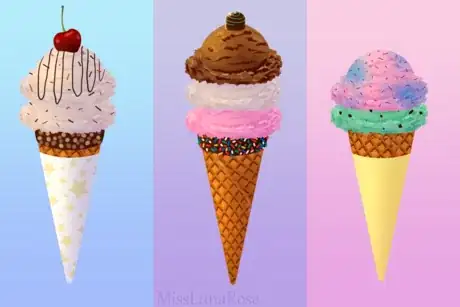
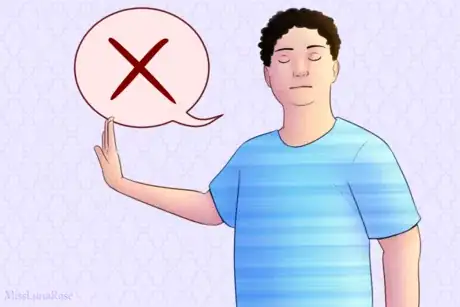
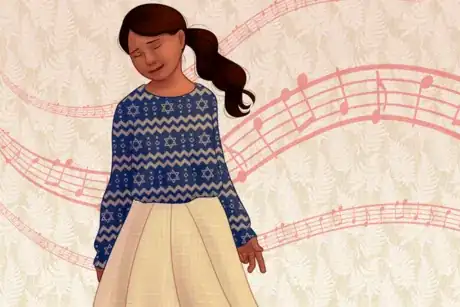

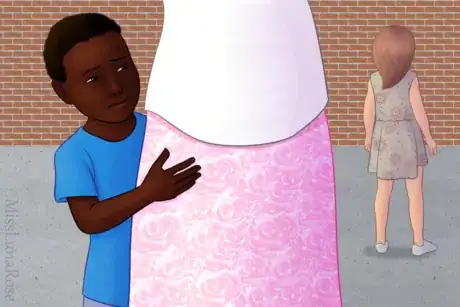


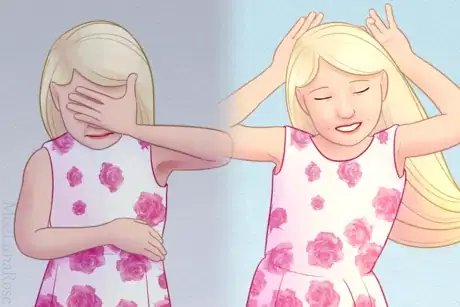
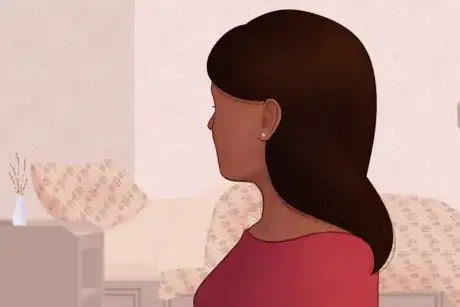
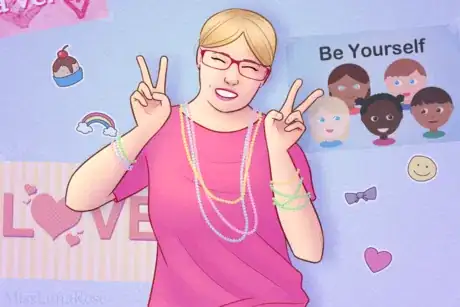



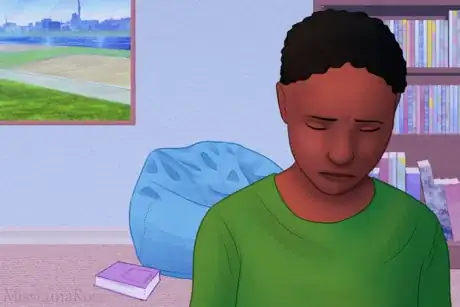
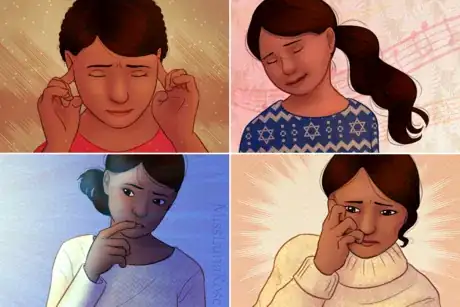



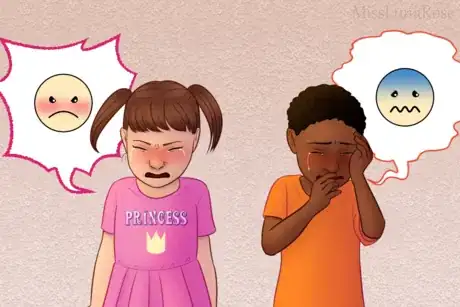


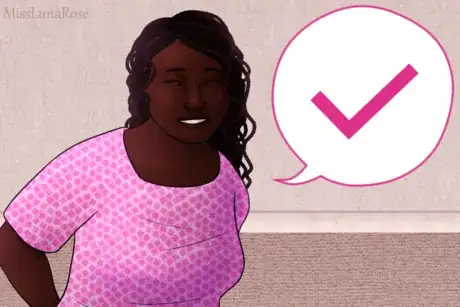
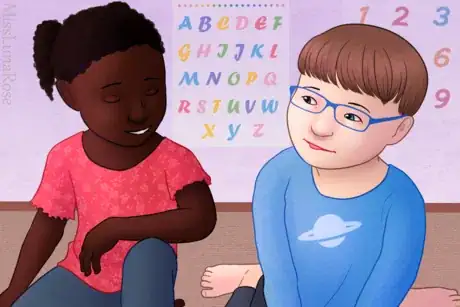





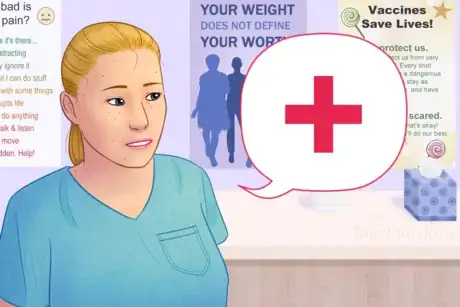
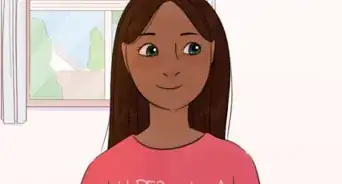


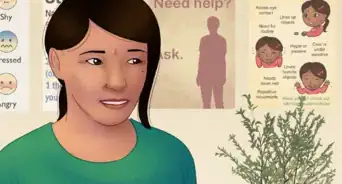
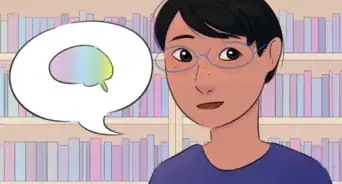
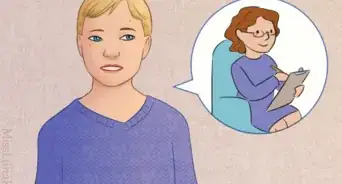




















































Medical Disclaimer
The content of this article is not intended to be a substitute for professional medical advice, examination, diagnosis, or treatment. You should always contact your doctor or other qualified healthcare professional before starting, changing, or stopping any kind of health treatment.
Read More...